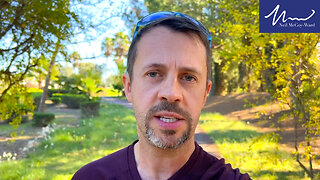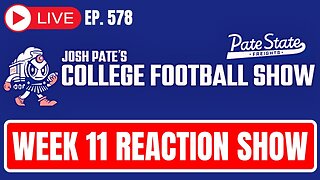Premium Only Content

cas: 1890208-58-8 Compound 7P Strongest Nootropic
cas: 1890208-58-8 Compound 7P Strongest Nootropic
IS COMPOUND 7P A BRAIN REGENERATIVE COMPOUND?
The neurons in the adult central nervous system (CNS) fail to regenerate axons after injury, which accounts in part for the poor functional recovery in patients with traumatic and neurodegenerative diseases (1).
The failure of axon regeneration is attributable to a growth-inhibiting environment involving myelin-associated inhibitors (Nogo-A, myelin-associated glycoprotein, and oligodendrocyte/myelin glycoprotein) and glial scar at the injury site.However, neutralizing and/or removing such inhibitory factors are insufficient to promote long-distance axon regeneration (1).
In this study, in an effort to discover new pharmacological modalities to aid in axon regeneration, we employed phenotypic cell-based screens that allow visual assessment and quantitative measurement of neurite outgrowth in vitro. The phenotypic screening campaign and chemical modification efforts led to identification of compound 7p that enhances neurite outgrowth in cultured primary neurons derived from the hippocampus, cerebral cortex, and retina and that induces optic nerve regeneration in an animal model of optic nerve injury. Although it needs to be determined how the compound stimulates axon growth in vivo, our results should provide further insight into the treatment strategies for clinical conditions associated with a loss of axon.
Another report using phenotypic cell-based screen of chemical libraries and structure-activity-guided optimization resulted in the identification of compound 7p which promotes neurite outgrowth of cultured primary neurons derived from the hippocampus, cerebral cortex, and retina. in an animal model of optic nerve injury, compound 7p was shown to induce growth of gap-43 positive axons, indicating that the in vitro neurite outgrowth activity of compound 7p translates into stimulation of axon regeneration in vivo.further optimization of compound 7p and elucidation of the mechanisms by which it elicits axon regeneration in vivo will provide a rational basis for fut
Compound 7p (2-[(2-methoxyphenyl)[(4-methyl phenyl) sulfonyl] amino]-N-(4-methoxy-3-pyridinyl) acetamide) showed the highest activity against cervical cancer cells. In a nude mouse xenograft model inoculated with HeLa cells, 7p showed dose-dependent inhibition of cervical tumour growth. Histopathological examination of excised tumour-bearing tissues showed that 7p improved the microstructure in a dose-dependent manner. Compound 7p also increased the proportions of HeLa cells in G0/G1 and S-phase and significantly decreased that of G2/M-phase. The effects of 7p on C-caspase-3, C-caspase-9, Bcl-2 and Bax expression in HeLa cells were also determined.
Compound 7p was developed as one in series of compounds with the aim of identifying dual-acting thromboxane receptor antagonist/synthase inhibitors. In fact compound 7p shows selectivity for prostaglandin I2 synthase (PTGIS, CYP8A1) over thromboxane synthase (CYP5A1).
-
 LIVE
LIVE
Game On!
9 hours ago $2.32 earnedThe Miami Dolphins FINALLY Win a Prime Time Game!
1,181 watching -
 16:27
16:27
This Bahamian Gyal
1 day agoBLACK woman calls MAGA supporter SELLOUT at PISTONS game
17.5K17 -
 18:35
18:35
Neil McCoy-Ward
19 hours ago🇺🇸 TRUMP 🇺🇸 Just Dropped An Absolute BOMBSHELL… (THINGS ARE ABOUT TO GET CRAZY!)
12.3K17 -
 7:49
7:49
Misha Petrov
12 hours agoThe SHOCKING Disrespect Toward U.S. Veterans
10.2K31 -
 20:17
20:17
RTT: Guns & Gear
17 hours ago $2.13 earnedIs This The Best Glock Clone For Under $300 | Bear Creek Arsenal Grizzly BC-102
11.7K9 -
 59:49
59:49
The Tom Renz Show
20 hours ago"NC is Still a Disaster and the People There Still Matter - With Joshua Macias"
15.3K2 -
 7:22
7:22
Dr David Jockers
17 hours ago $0.10 earned1 Teaspoon Per Day Burns Belly Fat Quickly
14.7K -
 1:21:34
1:21:34
Josh Pate's College Football Show
1 day ago $25.26 earnedWeek 11 Reaction Show: Alabama Rolls LSU | Ole Miss Owns UGA | Miami Falls | AP Poll vs JP Poll
83.4K6 -
 30:01
30:01
Shrouded Hand
1 day ago $15.49 earnedThree Disturbing Missing Child Cases
53.3K11 -
 8:27
8:27
Rethinking the Dollar
20 hours agoHow to Navigate the Crypto Boom vs. Metals Drop in 2024
36.2K6